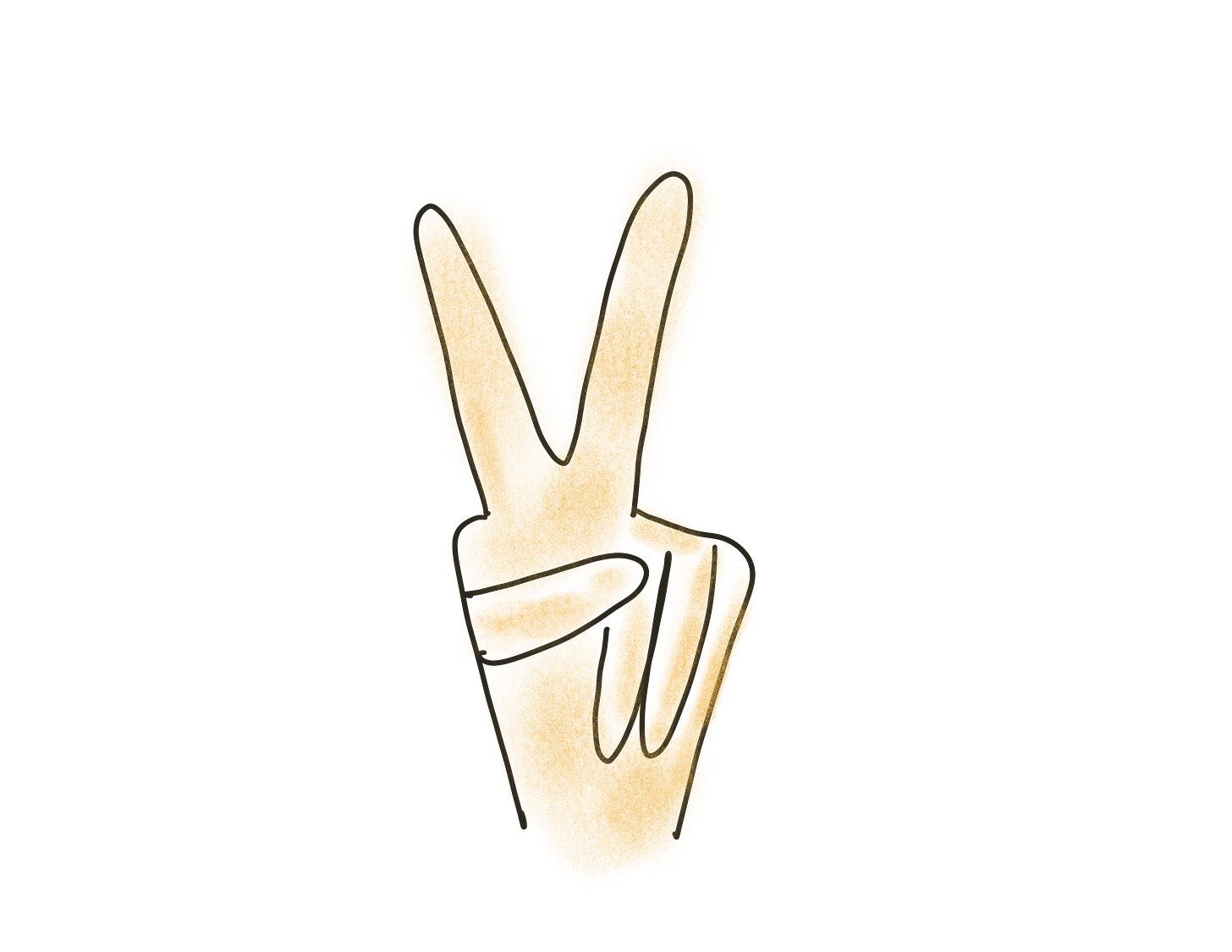Close of play: Meet the Low Hanging Females
October update: kicking off a new “day in the life series” showcasing 24 hours in the lives of working creative women
Hi friends,
In my twenties I had to get the tube a lot—to and from work experience stints, seeing friends across the city, and always running for the last tube home (before they extended the curfew).
It was around 2010 when freebie magazines were just hitting their peak moment. As a last hurrah, media outlets were trialling a “give it all away for free” model to see if winning at a sheer numbers game was enough to hold dominion with a certain readership and therefore maintain advertisers and stay afloat. (Spoiler: it was not, they all died out too.)
In the heyday of this freebie era was Stylist, a thin floppy issue of writing for women (as the gender-opponent to Shortlist), which was thrust into your hands as you descended onto the million-mile escalators which transported you into deep deep earth.
To be fair to Stylist, it wasn’t a terrible magazine. Even if many issues were used as seat covers or neck rests or chewing gum repositories.
They had some smart editors, strong writers, and I was particularly drawn to the regulars—the first two or three shortform features which fronted every issue.
One of these regulars was the Day in the Life: a one-page first-person interview write-up which took us through 24 hours with a random working woman in London. Though these women were mostly plebs like me, as in they didn’t have a celebrity status, they were often high-powered, important (to somebody), and preternaturally driven—reflecting, I suppose as Stylist hoped, the exact kind of high-spend female reader they aimed to attract.
Either way, it was the only interesting feature in the magazine I religiously read. Even just to scoff at how early some of these women rose to try and get a workout in before breakfast. What I like most about the series is how you can know almost nothing about the person profiled, and yet be totally absorbed in the minutiae of their morning coffee ritual, or how they decide what to wear.
The format is an oldie and a goodie. Replicated many times, it can be traced back to The Sunday Times’s “Life in a Day” series, which
wrote excellently about for Formats Unpacked here. As Nick explains, this feature idea was started in 1977 by the then editor Hunter Davies. Tom Hollander’s self-written example is probably one of the best I’ve ever read. When else would be interested in someone’s habit of night waking to pee and take an antihistamine? It works so well because it unites us all as human animals with various basic needs throughout a day—to sleep, eat, shit. While pretending for the most part of the day that we don’t.There have been a few wonderful examples here on Substack too:
’s Home Economics is a similar kind of regular series, as you are totally drawn into the personal finances of random couples you’ve never met before. used to run a breakdown of mother’s days in her previous Substack Now We’re Talking, though this looks like it’s been sunsetted for now.As a diehard fan of this kind of feature, and anything which puts your readers and regular people’s stories in the spotlight, I’ve decided to kick off my own version of it here on Tell Their Stories. Next week, lovely folks, I launch the issue one of On the Clock—24 hours in the lives of working mothers.
One of the collaterals I realised about becoming a mother for the first time during in Covid is my cohort and I missed out on the “watch and learn” aspect of mothering.
There’s an element to meeting up with mums in cafés and playgrounds when your babies are babies where you just sort of stare at other mums and notice the little things they do.
Oh that’s how they get the baby ready to go without dropping everything. Oh that’s a good way to get a baby’s squidgy arms into a romper. Oh that’s a smart idea to keep the baby from howling while you get ready yourself. These seem insanely small details. But they aren’t the kind of thing you can easily ask someone over text, or even know that you didn’t know. This is isn’t well-researched or well-documented, but “watch-and-learn” seems to me a pretty key aspect of mothering noone talks about. Plus, mothering in 2025 is still an isolated experience. Despite snippets of conversation, noone really knows how the hell you get a baby to sleep at night, or what’s the easiest way to dispel a toddler meltdown. You don’t know what you don’t know until you don’t know. You just try things, hear what others do, and try those.
What I would have given to be a fly on the wall of the other mothers stood rocking their children in arms at 2am, 3am, 4am, on those long dark lonely nights. For camaraderie, above all. For reassurance.
When I went back to work with my firstborn in 2020, I looked around me for examples of how I might make it work. But there weren’t any other female working mothers with babies at the tech companies I worked for. I had moved away from my friends in the city who also had to hold down full-on full-time jobs while raising young children. I didn’t know anyone else working round the clock and pumping all the feeds or navigating daycare for those under one.
How do you do it? I would whisper furtively to old colleagues I met up with on trips to the big city, or when they came to visit me. I was lucky. I had two older sisters—two badass mothers with high stakes high powered jobs. They are my forever role models and I hungrily ate up every morsel of advice they offered.
I knew a few working mothers in tech but had to arrange private phone calls to discuss how they managed. Among my mum friends IRL, we didn’t talk about work. And at work I tried to smooth away anything related to my life as a mother. I was experiencing what Jia Tolentino called “the self severance of having two young children, but pretending for half the day that you don’t.” I felt keenly the stigma: talking about motherhood “too much” was clearly stopping women from open discourse about the difficulties of balancing paid work with the unpaid labour of mothering, not to mention any additional creative pursuits or hobbies which would keep her sane.
Mothering in 2025 has its own weird set of conditions and systems which are shaping it, sometimes hindering it, sometimes setting elements free. I’m still deeply curious about how other women make it work. The double shift. The triple shift. The balance of paid work with mothering work alongside creative pursuits. So I decided to create space for us all to be a fly on the wall of working motherhood—shared through individual snippets of regular women’s days, told in their own voice.
I had a few names for the series. Most of them were about the strange concept of time—which shifts and warps depending on whether you’re caring for a newborn or rushing home from the school run to attend a meeting. In the end, I landed on On the Clock because working mums know more than most how, whatever way you slice it, you are forever trying to figure out how to balance the time of your multiple roles, chasing time, and you are almost never able to clock off. Plus, since motherhood and working for me have always been intertwined, I find some of the original campaigns for work-life-balance (labour’s “eight hours for work, eight for leisure, eight for rest” for example) kind of laughable when modern mothers are trying to keep on top of so much.
But hidden in these stories there is power in the struggle.
I’m really into this idea that, as mothers, we have one of the most powerful jobs on the planet, though many systems try and convince us otherwise. And that, collectively, we really are one of the bigger forces globally to be reckoned with.
In this new series, On the Clock, I am creating a shared space for working mothers to take us through their day in the life, or life in the day. Simply, to take up space.
To kick off the series I have called on a few friends who I deeply love and respect. But I also want to hand over the mic to women I’ve never met before, so if you would like to be interviewed for the series, get in touch.
Edition #1 will land in your inboxes next week.
Until then read on for micro-updates on my work, writing and this newsletter, or bye for now,
WORK
My books are open for new clients from October. I recently updated my website with four types of writing/editing/strategy services on offer: POWER UP, TEAM UP, LEVEL UP, and GROUND UP. Take a gander here and get in touch if you’re interested in booking in for an initial chat.
WRITING
I’ve reached about 85% the final draft of my new nonfiction title which will be published in April 2026 (more details soon!), and about 70% through the first draft of my novel. I’ve developed a method to be able to pick up and drop both writing projects easily without loosing my train of thought or flow… it’s a bit complicated but if this is something you’re interested in I’m happy to share a future post on it. Or if you’re a mother-writer like me and juggling the children and paid work and writing, I’d love to hear from you!
TELL THEIR STORIES
On the Clock launches next week! Read about the other two new series in the newsletter here, and read the first interview with Jane Cholmeley for Shelf Life about feminism, book selling and British politics in the ’80s. I’m loving the new direction for the newsletter and would love to know what you think.





I would love to take part and be interviewed - welcome to drop me an email at rubycharrison@gmail.com